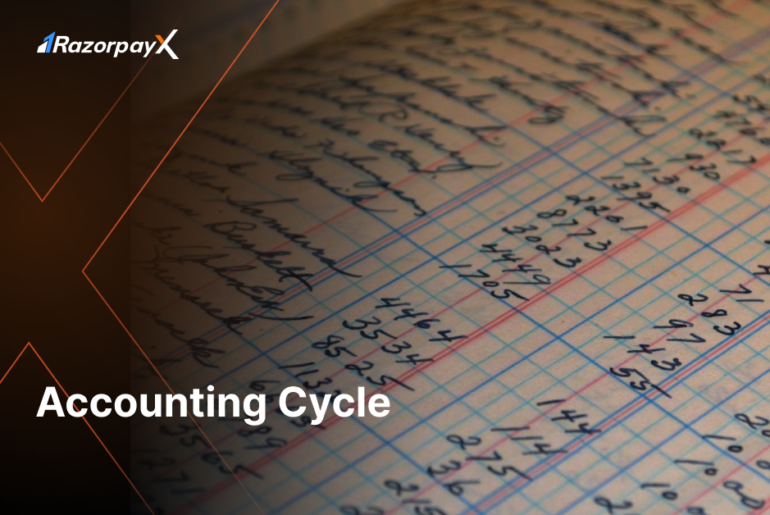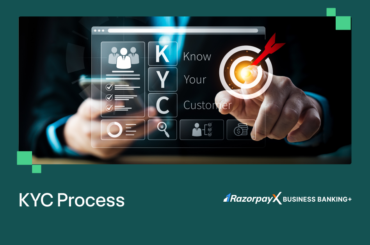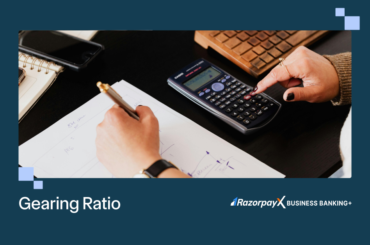Table of Contents
What is an Accounting Cycle?
An accounting cycle is a sequence of steps by which a company completes its bookkeeping tasks. It follows an 8-step process and considers one complete reporting period involving recording and analysis of different financial transactions of a business.
The primary objective of conducting this process is to anticipate and understand upcoming financial needs and take decisions accordingly. Companies, based on their need, analyse their financial standpoints regularly – monthly, quarterly or yearly basis.
Understanding the 8 Steps of an Accounting Cycle
Step 1: Identifying and Analysing Transactions
The first step is to identify and analyse financial transactions that have occurred during a specific accounting period. This involves reviewing several invoices, bank statements and receipts.
Step 2: Journalising
Once the transactions have been identified and analysed, record them in the general journal. A journal in accounting highlights records of all financial activities of a business and is transferred to other records like a general ledger. Each transaction entered in a journal states its date, accounts involved, and respective debit and credit amounts.
Step 3: Ledger Posting
After journalising, transfer the entries to the general ledger. Ledgers are the secondary books of accounts and record date-wise transactions for one particular account. This involves posting each entry to appropriate accounts in the ledger, such as cash, accounts receivable, accounts payable, and so on.
Step 4: Adjusting Entries
At the end of the accounting period, adjust entries to ensure proper recognition of revenues and expenses. These entries account for items such as accrued expenses, prepaid expenses, unearned revenues, and accrued revenues.
Step 5: Adjusted Trial Balance
Once adjusting entries have been recorded and posted , prepare an adjusted trial balance. A trial balance highlights all closing balances of accounts recorded in different ledgers. An adjusted trial balance lists all accounts with their updated balances after incorporating the adjusting entries.
Step 6: Financial Statements
Using the adjusted trial balance, prepare financial statements such as the income statement, balance sheet, and cash flow statement. These statements provide a detailed analysis of a company’s financial performance and position during the accounting period.
Step 7: Closing Entries
At the end of the accounting period, close all temporary accounts, such as revenues, expenses, and dividends, by transferring their balances to permanent accounts. This process brings back the temporary accounts to zero balance in preparation for the next accounting year.
Step 8: Post-Closing Trial Balance
Now after closing financial entries, prepare a post-closing trial balance to ensure that the books are in balance. This trial balance includes only permanent accounts.
What is the Importance of the Accounting Cycle?
- Recording Transactions
The accounting cycle ensures the systematic recording of all financial transactions that occur within a specific accounting period. This includes documenting the inflows and outflows of money, as well as other economic events that impact a company’s financial position.
- Organising Financial Data
This process helps organise financial data in a structured manner. Through processes like journalising and posting to the general ledger, transactions are categorised into specific accounts (e.g., cash, accounts payable, accounts receivable) based on their nature. This organisation facilitates the preparation of accurate financial statements and supports analysis and decision-making.
- Providing Accurate Financial Statements
By following the accounting cycle, businesses can generate financial statements such as income statements, balance sheets, and cash flow statements. These statements summarise the financial performance, position, and cash flows of the company, enabling stakeholders to assess its financial health and make informed decisions.
- Enabling Financial Analysis
The accounting cycle ensures accurate recording and organising of financial data, allowing for meaningful financial analysis. By analysing these financial statements and using tools such as ratios and trends, stakeholders can evaluate a company’s profitability, liquidity, solvency, and efficiency. This analysis assists in assessing the company’s performance, identifying strengths and weaknesses, and making informed financial decisions.
- Facilitating Regulatory Compliance and External Reporting
The accounting cycle ensures that financial records and reports comply with accounting principles, standards, and regulatory requirements. It provides the necessary documentation and evidence for audits, tax filings, and external reporting to stakeholders such as shareholders, investors, lenders, and regulatory authorities.
Difference Between Accounting Cycle & Budget Cycle
| Basis of Difference | Accounting Cycle | Budget Cycle |
| Definition | The accounting cycle is a systematic process that businesses follow to record, analyse, and report their financial transactions. It involves a series of steps that are repeated in each accounting period to ensure accurate and reliable financial information. | The budget cycle refers to the process of developing, implementing, and monitoring a budget within an organisation. It involves a series of steps that organisations follow to plan and control their financial activities for a specific period, typically on an annual basis. It helps in setting financial goals, allocating resources, and monitoring performance to achieve those goals. |
| Purpose | It is focused on accurately recording, classifying, and summarising financial transactions that have already occurred within a specific accounting period. It is primarily concerned with the historical financial data of a business. | It is centred around planning and controlling an organisation’s financial activities for a future period. It involves setting financial targets, allocating resources, and monitoring performance against the budget. |
| Steps Involved in the Process | It involves steps such as identifying and analysing transactions, journalizing, posting to the general ledger, adjusting entries, preparing financial statements, closing entries, and preparing a post-closing trial balance. | It typically includes steps such as establishing budget guidelines, gathering input from various departments, creating a preliminary budget, reviewing and revising the budget, finalising the budget, implementing the budget, monitoring actual performance, and making adjustments as needed. |
How Does RazorpayX Help Entrepreneurs with Better Management of Accounts?
RazorpayX is a business banking platform that imparts hassle-free services to ease modern-day banking. Businesses can open current accounts through RazorpayX to make it easy to record day-to-day financial activities. The next-generation smart dashboard highlights the inflows and outflows of funds and one can access it with the help of any device.
Furthermore, to meet any working capital requirement for R&D, the RazorpayX-powered forex funding facility offers finance solutions in a few clicks. Raising funds from global investors has never been this easy; hence improving operations, and innovations by channelising ideas.
Read more





